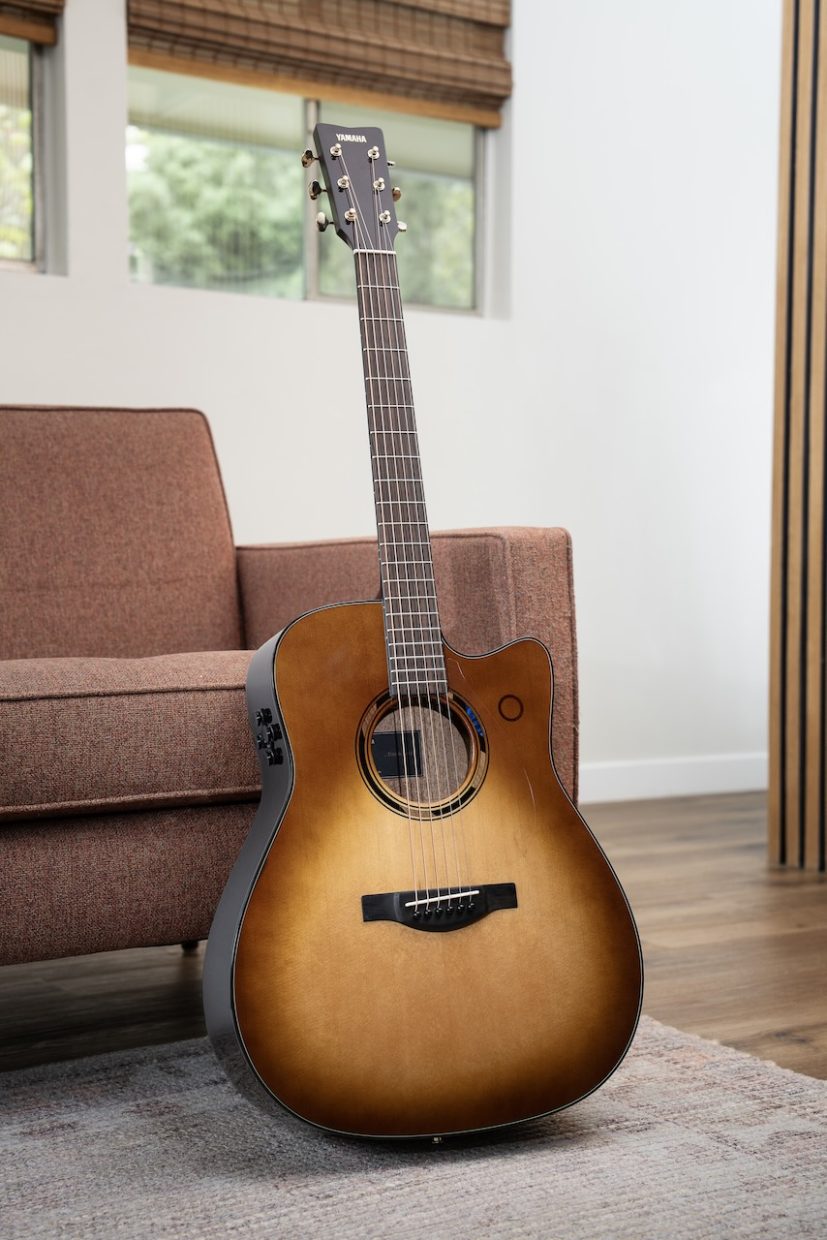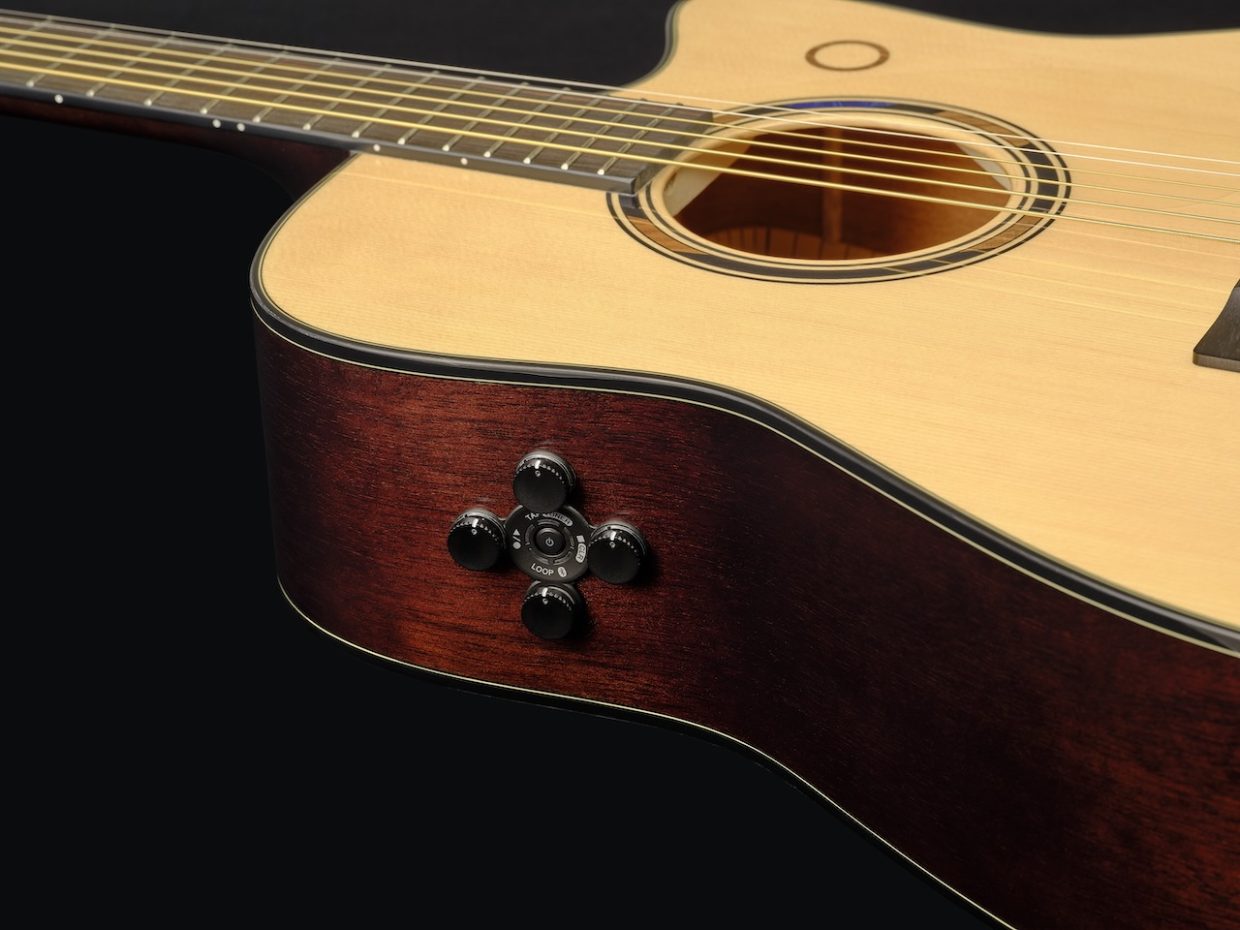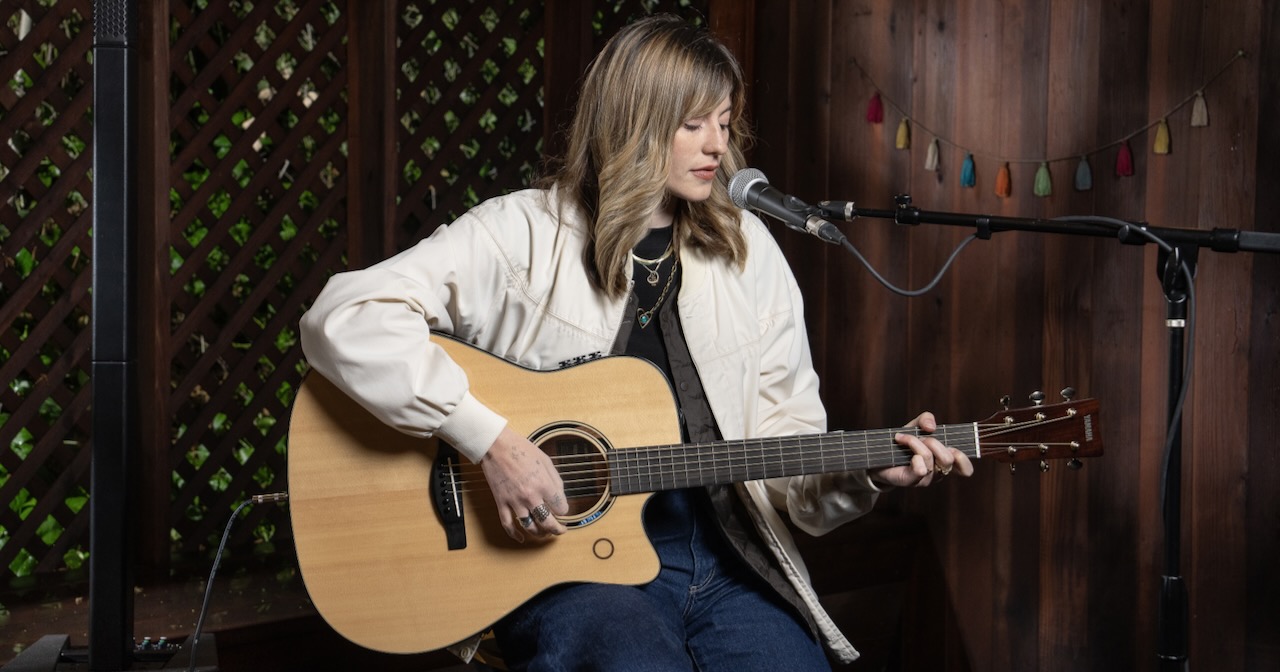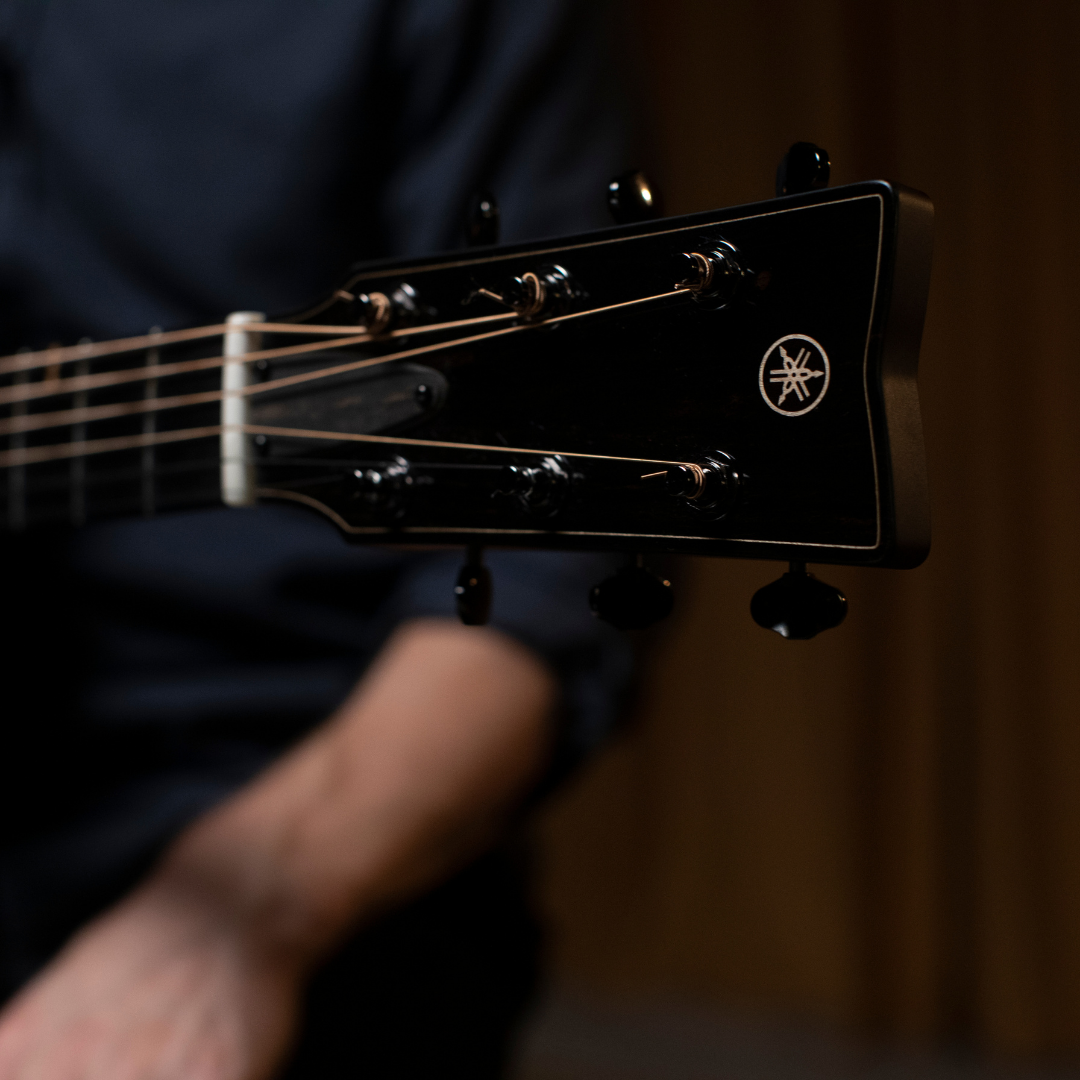Yamaha Guitars knew they were breaking ground – and raising eyebrows – when they debuted their TransAcoustic Guitar at the 2016 winter NAMM and Musikmesse trade shows. The original TransAcoustic Guitar turned heads immediately, thanks to its innovative technology and, of course, the quality acoustic guitar body and sound that musicians have long associated with the Yamaha name.
Fast-forward eight years and Yamaha has introduced the second-generation TAG3 C, a completely new model offering advanced features and more options. With Bluetooth capability, a built-in looper, a rechargeable battery with a five- to eight-year life, iOS and Android compatibility, and a plethora of controls and effects — reverb, chorus, delay, its TAG Remote app, and more — the TAG3 C is a workhorse, opening new avenues for artistry at all levels. It’s also a beauty, with its dreadnought body, solid Sitka spruce top, and solid mahogany back and sides.
The TAG3 C was designed for guitarists and, in a sense, by guitarists. When the first generation entered the marketplace, Yamaha’s Product Manager, Shingo Ekuni, was hands-on with customer reviews and interviews – what they liked, needed, and ultimately wanted. “We concluded that we needed more capabilities for creative players,” he says, “for the person who is proactively doing their practice at home or creating songs at home.”
This presented the challenge of creating a high-tech yet user-friendly guitar that sparks interest in tech-minded musicians without alienating traditionalists. “From my perspective as a player, and with most of my friends also being musicians, guitar players can be very particular about their sound,” says Yamaha’s Marketing Manager, Brandon Soriano. “They want the level of control. One person might prefer a plate reverb while another prefers a hall. They might want a very specific decay time or tone, and the same thing goes for chorus or delay. At the same time, guitar players don’t want a lot of barriers to actually playing the guitar. They don’t want an overly complicated user interface and experience. The way the TAG3 C is structured, you get all of the control over the specific sounds you want in the app, but when it comes to actually using the guitar, it’s a very simple interface.”

A cursory glance at the TAG3 C might cause one to scoff, “Second-generation guitar, TikTok-generation players.” But – curmudgeons rejoice! – this is not the case. No interest in apps? No worries. “You don’t need internet to use the guitar,” says Soriano. “You don’t have to connect it to Wi-Fi. And it doesn’t require the app to run. Straight out of the box, without downloading the app or anything, you can turn the guitar on, effects will already be dialed in, and you can use all the functionality.
“If you want to use the Bluetooth audio, of course you need to connect your phone or another Bluetooth output device. And if you want to get into the parameters of the effects, like changing from a plate reverb to a hall, that’s where you start using the app. But you can fully use the guitar without using the app.”

“Something really great with this guitar is the quality strictly as an acoustic guitar,” he adds. “It’s built to Yamaha standards, which, as we all know, are very solid, rigorous, and high level. Even if you were to take out all the technology, I would still love it just as an acoustic guitar. I think that’s going to add to people wanting to pick it up.”
“Nowadays, with our mobile devices, the ‘smart’ devices, with tools for guitarists, everybody is using the tuner, the metronome, [from] the very basic stuff to more complex and connected devices,” says Ekuni. “Customers are happy to accept new technology for a new type of product. Parallel with that, the TAG3 C is an authentic acoustic guitar, but the technology can expand the possibility of acoustic guitar playing.”

“We are in a technological age, and it’s all around everybody all the time,” Soriano agrees. “There is a little more open-mindedness to innovation, even in commonly traditional circles like bluegrass, for example. Customers also want to know that their money is well spent and that they can be confident in their purchase from a quality standpoint, durability, sound, playability, all those things. Those are some of the main pillars of Yamaha — delivering the best quality for the money at any price point, from the $400 guitars to the $4,000 guitars.”
This content brought to you in partnership with BGS sponsor Yamaha Guitars. Discover more about Yamaha Guitars and the TAG3 C here.
Photos courtesy of Yamaha Guitars.


